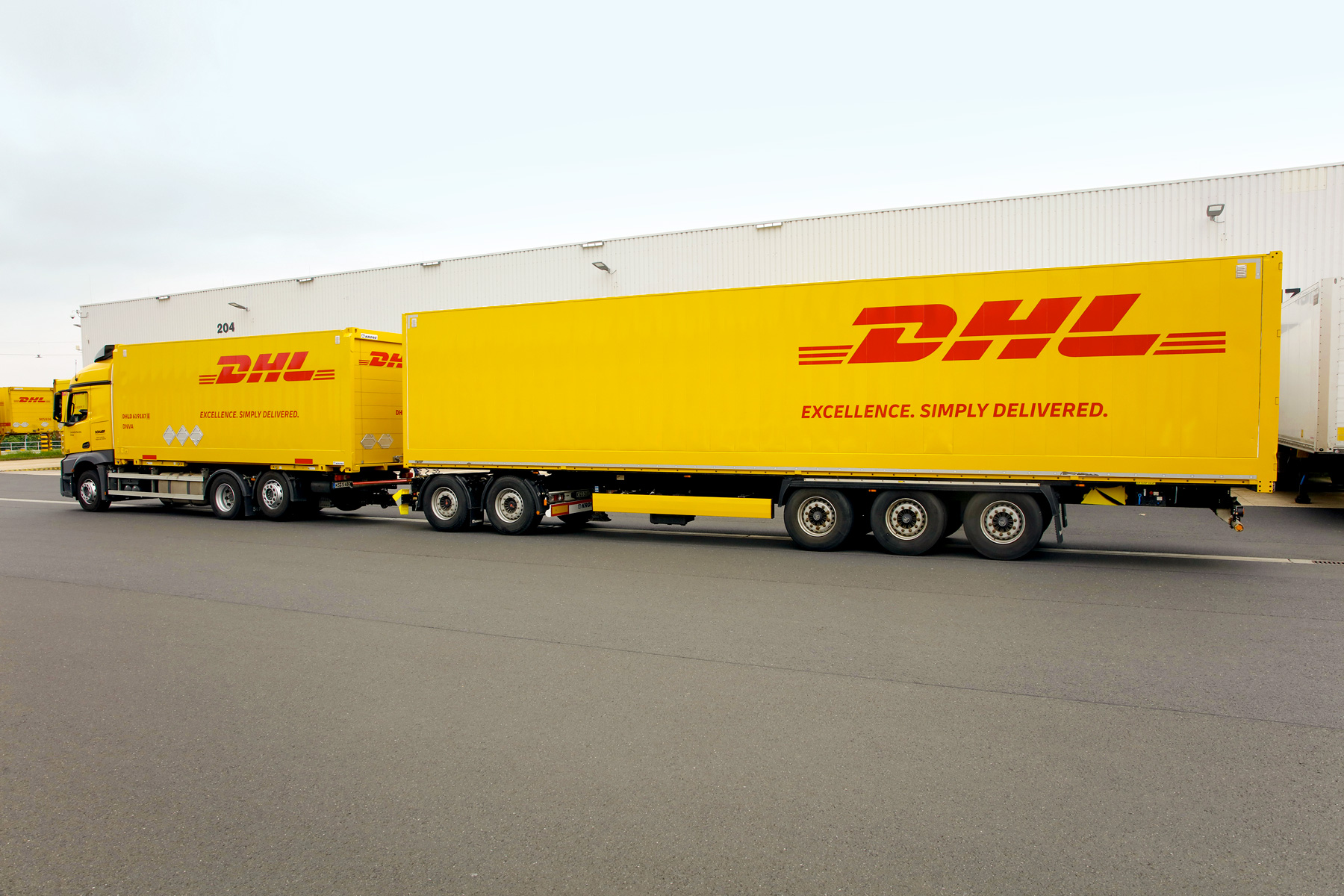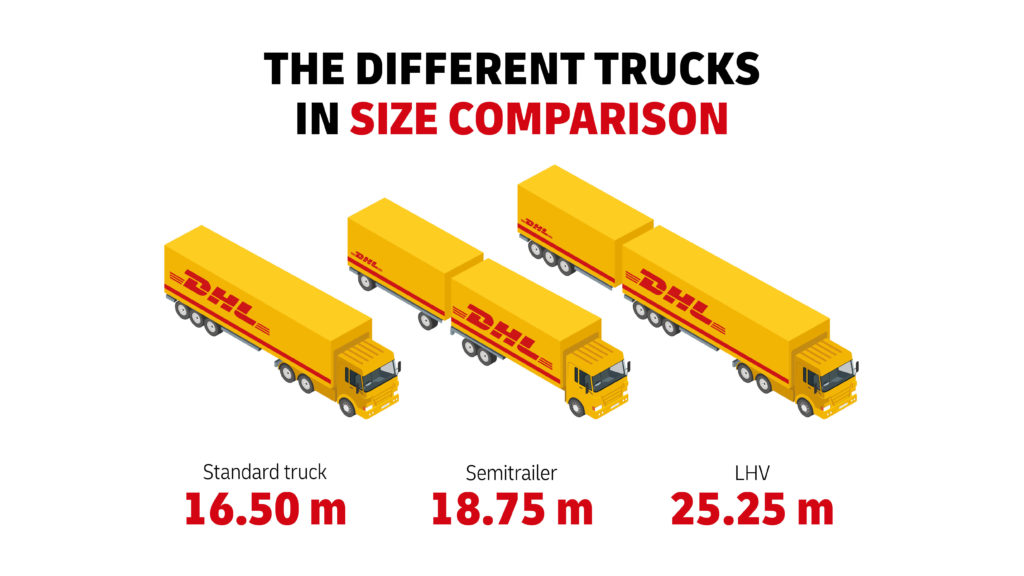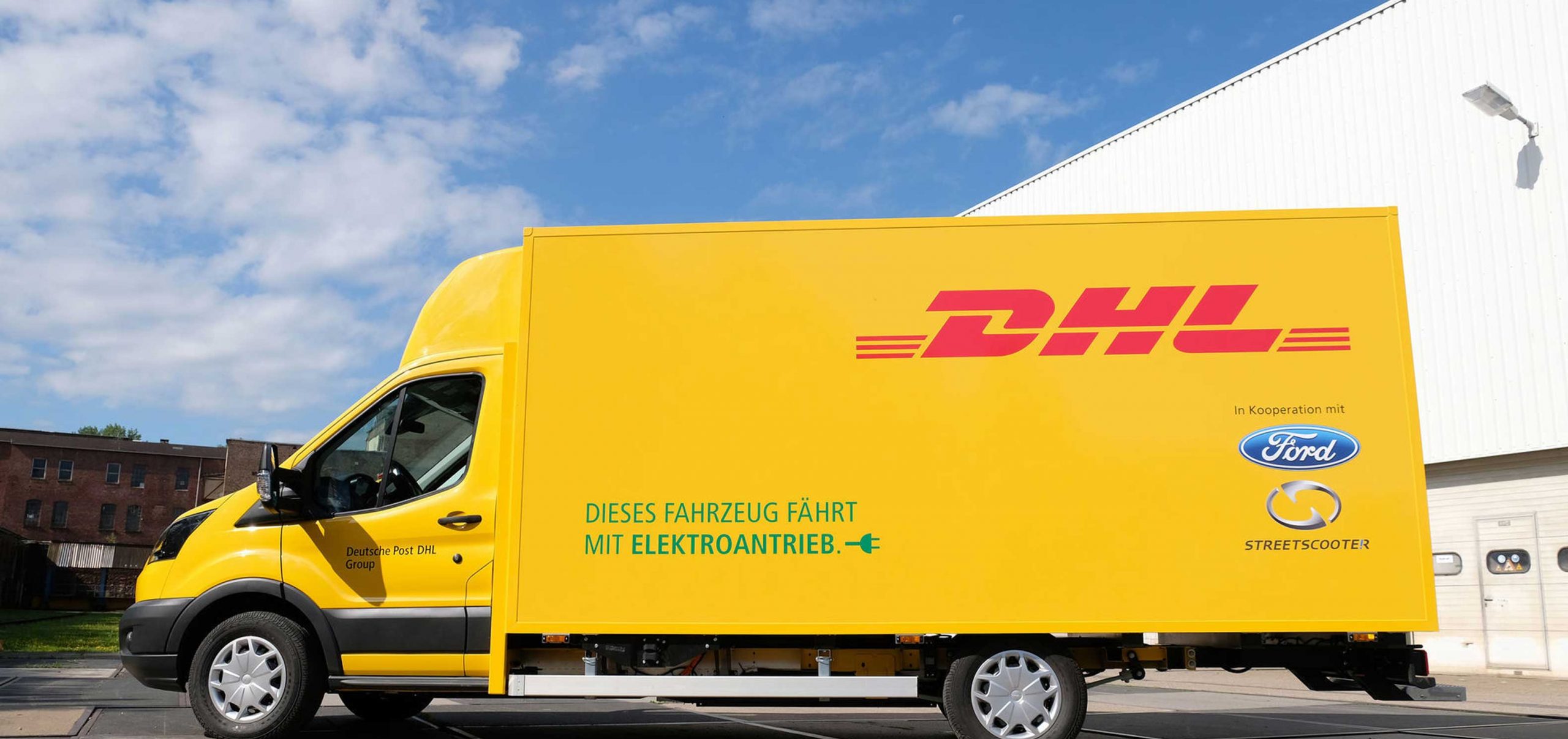
If 18.75 meters of truck length is not enough, a Longer Heavier Vehicle (LHV) might be an option. An LHV not only reduces traffic on the road, but also CO2 emissions in transport logistics. Since 2017, LHVs have been permitted on specifically designated roads in Germany and are helping to relieve the strain on freight traffic bit by bit. Here is an in-depth look at such extra-long trucks – and how they affect the environment.
What is an LHV? An Overview
The name says it all: The “Longer Heavier Vehicle” is a special type of truck exceeding the actual maximum permissible length for trucks of 18.75 meters. The LHV's load is distributed over six to eight axles and over a length of up to 25.25 meters. It is only allowed to be driven on selected roads in Germany, where LHVs are approved since 2017, following a test run lasting several years until the end of 2016.
Forecasts by the German Federal Government on the development of road freight traffic predict an increase of about 40 percent by 2030 compared to 2010. To prevent environmental impacts from growing at the same rate, alternative means of transport must be used. The LHV is a feasible response to the challenge of rising CO2 emissions. The larger freight volume requires fewer drives and reduces the transshipment of goods, which also benefits the climate.
LHV, EuroCombi, Longliner, Megaliner, Gigaliner – what are the differences?
From common parlance or as brands of certain manufacturers, you may have heard names like EuroCombi, Longliner, Megaliner or Gigaliner for trucks of exceptional length. Simply put, all expressions refer to an LHV, just in slightly different contexts. In Germany in particular, EuroCombi is used for LHVs, and the latter terms are model names for LHVs of a particular manufacturer.
LHVs: Weight, Measures, and Capacities
Classic trucks in the form of articulated trucks may not exceed a length of 18.75 meters. In the case of truck trailers, this is even only 16.5 meters. This is not the case for LHVs: These are up to 25.25 meters long and may have a total weight of 40 tonnes, or 44 tonnes in combined transportation. However, the same weight limits apply to ordinary trucks, too: After all, road haulage rarely involves the transport of very heavy goods, which is why the goods transported by LHVs are simply more voluminous and bulkier with more space to occupy. Thus, the LHV can carry more volume without necessarily requiring additional weight.

Advantages of LHVs: Benefiting the Environment?
The population's eco-consciousness, and likewise that of companies, is more distinct nowadays – and there are many ways to contribute to a lower CO2 impact. The LHV is one of these possibilities.
From January 1, 2012 to December 31, 2016, the German Federal Government and the Federal Ministry of Transport and Digital Infrastructure conducted a field trial for the use of LHVs. The positive expectations were confirmed during this five-year test run, enabling regular operation to begin on a selected road network in Germany on January 1, 2017.
Findings of the Field Trial: LHVs in Long-term Test
Many different insights emerged from the Federal Government's field trial, which eventually led to allowing LHVs for selected road transport.
The most relevant results of the field test:
- Three rides with conventional trucks are replaced by two with LHVs
- Increase in efficiency and fuel reduction between 15 and 25 percent
- From a construction point of view, the infrastructure is under no greater strain than from regular trucks
- Braking distance of an LHV is shorter than that of conventional trucks
- The workload of drivers of LHVs is comparable to that of drivers of other trucks
An initial objective that went along with the introduction of LHVs was to reduce road traffic while maintaining freight volumes. This has been confirmed in the field test: Whereas three rides with conventional trucks are required to transport certain goods, just two rides with LHVs are sufficient. As a result, fuel consumption is reduced by up to 25 percent per tonne transported. At the same time, employee costs are reduced, the transshipment of goods is accelerated, and CO2 emissions are decreased.
The savings in fuel and the related reduction of CO2 emissions are among the main arguments for the use of LHVs. The same amount of goods can be carried with less impact on the environment compared to conventional trucks. Yet, LHVs do not have a greater negative effect on the state of the roads. In fact, the opposite is true: Based on a total weight of 40 tonnes, for example, an LHV actually puts less strain on the infrastructure than conventional trucks because the load is distributed over more axles.

And the LHV has advantages not only in environmental terms: LHVs have a shorter braking distance because more axles support deceleration. Given the same load weight, this leads to a faster standstill in dangerous situations. Moreover, LHVs are usually equipped with significantly more safety technology as standard.
The field trial has revealed that despite the extended vehicle length, drivers of LHVs do not suffer from any more stress during the ride than drivers of conventional trucks. Besides, only true professionals with many years of experience are authorized to drive them. This makes the use of LHVs on highways all the safer – neither are other motorists negatively affected. Overtaking of LHVs is just as safe as it is for regular trucks.
Road or Rail: Does the LHV Compete with Freight Trains?
At the start of the field trial, one proposition was that the introduction of LHVs could induce companies to shift some of their freight transport from rail to road. However, this presumption was not validated. Compared to rail, LHVs carry primarily bulky but rather light goods, thus only replacing other road vehicles – and, as has already been noted, they even reduce highway traffic, since more goods can be shipped with fewer drives.
Overview of LHV types
With LHVs, there are various possible combinations of tractor units, trailers, etc. These are classified in the different LHV types, which we summarize in the following.
LHV Type 1: Option 1 is a combination of tractor unit and semitrailer with a possible total length of 17.88 meters, which is licensed until the end of 2023.
LHV Type 2: Type 2 combines a semitrailer truck with a center-axle trailer, whereby a joint total length of up to 25.25 meters is permitted. It is now approved for an unlimited period.
LHV Type 3: This type is composed of a truck with a reduction axle and a semitrailer. Together they have a maximum length of 25.25 meters.
LHV Type 4: The fourth option consists of a semitrailer truck and an additional semitrailer, which may also have a total length of 25.25 meters.
LHV Type 5: The fifth and last of the approved LHV types combines a truck with a trailer. Together, they must not exceed a total length of 24 meters.

Longliner, Megaliner and Gigaliner in Germany: the Road Network for LHVs
Since January 1, 2017, LHVs have been permitted on German roads, but are only allowed to be driven on a restricted and firmly defined route network. Driving through towns and villages is usually prohibited – rather, the objective is to connect key logistics hubs from which freight is shipped the last mile by other modes of transportation. The grid of permissible roads in the 10th Amending Regulation for LHVs specifies which routes may be used by them. Companies are entitled to propose additional routes, which are reviewed by the respective Federal States.
On November 14, 2020, this 10th Amending Regulation came into force and added further routes to the usable road network for LHVs. With each Amending Regulation, new provisions on the use of LHVs become effective to successively promote the relatively new transport vehicle.
Conclusion
In the German Federal Government's five-year field trial, the LHV has proven to be a useful alternative to conventional trucks. In particular, the lesser impact on the environment due to lower CO2 emissions has shown it to be a sustainable model that relieves road congestion, increases driver safety, and cuts costs for companies without having to reduce freight volumes. This adds a new, modern facet to freight logistics without having to adapt the infrastructure of the German traffic network.
Questions
Where are LHVs allowed to be driven in Germany?
LHVs may only be used on explicitly defined permissible roads in Germany. At the request of companies, this permissible route network can be gradually extended, if an assessment by the respective Federal State proves the specific route to be suitable for particularly long trucks.
How many tonnes are LHVs permitted to carry?
LHVs are allowed to drive with a total weight of 40 tonnes – including the vehicle itself.
What is the length of an LHV?
Depending on the type, LHVs may have a maximum length of 25.25 meters. Compared to conventional trucks with a maximum length of 18.75 meters, this represents an increase of 6.5 meters.



